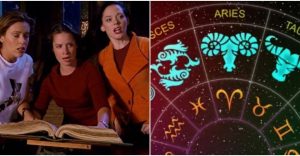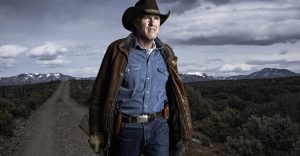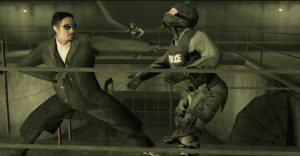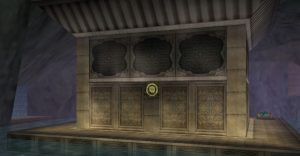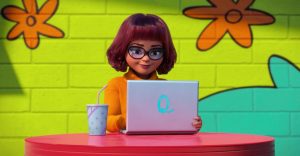Super Smash Bros.: 10 Things Only Die-Hard Fans Know About The Games

With the release of Super Smash Bros. Ultimate‘s final DLC character, Sora, the Super Smash Bros. series has seen an unprecedented amount of fan attention and acclaim and is hailed as one of the best fighting games on the Nintendo Switch. But even the most popular series have their fair share of little-known facts that only die-hard fans are aware of.
Super Smash Bros. is no exception to this rule. The series has a number of easter eggs, niche facts, and interesting additions that are all but unknown by all but the most devoted of plays.
The Difference Between Echo Fighters

‘Clone’ fighters, or fighters with little difference between them, have been a constant staple of the Super Smash Bros. series since its early installments. For example, Ness and Lucas, or Pit and Dark Pit are incredibly similar in move set and characteristics. However, some of the characters with smaller differences, such as the aforementioned Pit and Dark Pit have been codified as ‘echo fighters’.
However, the differences between different echo fighters vary wildly. For example, Lucina lacks the extra damage modifier that her non-echo counterpart, Marth, has on the tip of his sword, while Dark Pit has slightly different specials than Pit. However, some differences between echo fighters are merely aesthetic. Samus and Dark Samus, or Daisy and Peach, are essentially identical except for models and animations.
Sonic’s Last Minute Inclusion

Sonic the Hedgehog’s sudden appearance in Super Smash Bros. Brawl was a high point for many fans in that game’s story mode, The Subspace Emissary, and he’s been a fan-favorite in the installments ever since. However, his frankly random appearance in that mode is indicative of Sonic’s inclusion in Super Smash Brother Brawl as a whole.
The series director, Masahiro Sakurai, told Source Gaming that Sonic’s inclusion was never guaranteed, though fans believed it to be so. In fact, the blue blur was added to the game’s roster of characters incredibly late in development. Furthermore, Sonic’s inclusion actually led the release of Super Smash Brothers Brawl to be delayed.
Roy’s And Corrin’s Release

Roy, from the Fire Emblem series of turn-based strategy games, made his debut in Super Smash Bros. in the second installment, Super Smash Bros. Melee. However, Roy is unique among the Super Smash Bros. cast. Roy is the only character whose Smash Brothers debut predates the game he originates from. Fire Emblem: Binding Blade, which saw Roy’s debut, was in fact released four months after the release of the Japanese edition of Super Smash Bros. Melee.
Corrin, first released in the Wii U and 3DS versions of Super Smash Bros. was similarly affected, with their debut game, Fire Emblem Fates, releasing only sixteen says after their Smash Bros. debut.
The Shared Secret Between Joker And Master Hand

At first glance, the characters Master Hand and Joker couldn’t be more different. One is a floating hand that is one of the mascots of the Super Smash Bros. series, and the other is a relatively new inclusion from a PlayStation Exclusive game, added as DLC. However, Master Hand and Joker actually share one interesting thing in common. They are both voiced by the same voice actor: Xander Mobus.
Mobus has had a storied career with Nintendo, especially in the Super Smash Bros. franchise. Not only does Mobus play these two disparate characters, but he also provides the voices for several others as well. These include Master Hand’s opposite, Crazy Hand, as well as the announcer in the two newest installments of the Super Smash Bros. series.
The Voice Of King Dedede

King Dedede has been both a staple character in the Super Smash Bros. series since Super Smash Bros. Brawl, as well as a fan-favorite character in the Kirby franchise. However, the person who provides the greedy king’s voice might be surprising to some.
In Super Smash Bros. Ultimate, King Dedede is voiced by no other than Masahiro Sakurai, the director of the franchise. While this might not be novel to anyone who knows Sakurai’s history with the Kirby franchise, realizing that he also voices members of the Super Smash Bros. cast is nonetheless a novel fact.
Strongest Characters

With the release of Sora, Super Smash Bros. Ultimate and the series as a whole has 82 different fighters. With this many characters, and with the breadth of the series, it is not surprising that some have edged out their competition in strength over the years. In fact, four characters were banned in standardized tournaments throughout the history of the franchise. This included Meta Knight in Super Smash Bros. Brawl, Bayonetta and Cloud in Super Smash Bros. for the 3DS and Wii U, and Hero in Super Smash Bros. Ultimate.
While many of these characters were banned for their strength all around, Hero’s randomness led to his temporary ban as many players believed his down special, Command Select, and his ability to randomly inflict critical hits was too random and powerful for tournament play.
The Director’s Other Project

Mashiro Sakurai, the director of the Super Smash Bros. franchise, is synonymous with the series, having worked on every installment of the game. However, Sakurai has also had a large hand in another, somewhat unexpected Nintendo franchise: Kirby.
In fact, Sakurai was instrumental in creating the character of Kirby and worked on a number of the franchise’s earliest games. These included Kirby’s Dram Land, Kirby’s Adventure, and Kirby Super Star, to name only a few. And, although Kirby may not be the best hero in Nintendo history, they remain a beloved character thanks to Sakurai’s hard work.
Smash Brothers’ Strange Origins

The Super Smash Bros. franchise is now one of Nintendo’s landmark series and a console-selling title in its own right. However, the series actually started its development as something very different. Super Smash Bros. began as a unique fighting game for the Nintendo 64, called Dragon King: The Fighting Game.
Dragon King was meant to use the Nintendo 64’s joystick in a fighting setting and had many of the Smash Bros. franchise’s staples, including platforming and damage read as a percent. However, it was not to last. Dragon King: The Fighting Game was eventually retooled into the first Super Smash Brothers, which became a sudden success. The story is detailed by Masahiro Sakurai in an interview for Nintendo.com.
Why Solid Snake Was Included

Solid Snake, a pivotal and often funny character in the Metal Gear franchise, has been in both Super Smash Bros. Brawl and Super Smash Bros. Ultimate. However, Solid Snake’s inclusion was requested by the director of the Metal Gear franchise, Hideo Kojima.
Kojima originally asked for Solid Snake to first appear in Super Smash Bros. Melee, but the game was too far into development at the time of his request. However, his assistance was vital in having Solid Snake eventually join the Super Smash Bros. cast, and he even helped develop Solid Snake’s signature stage, Shadow Moses Island. Snake is one of the best characters to use in Super Smash Bros., so fans will be grateful for Kojima’s insistence.
Final Smashes Were Meant To Be Added Much Earlier

Final Smashes, which are incredibly powerful moves unique to each fighter, have been a staple of the franchise since their introduction in Super Smash Bros. Brawl. However, the sound sample discovered in the first Super Smash Brothers shows that their inclusion was meant to happen much earlier in the series.
For example, one such sample is of Ness saying “PK Starstorm,” his now-iconic final smash. In fact, some of these sound samples remain in Super Smash Brothers Brawl, albeit with filters applied over them.











